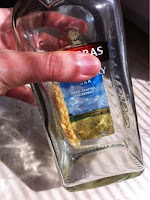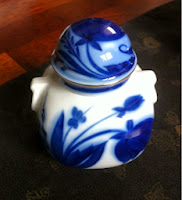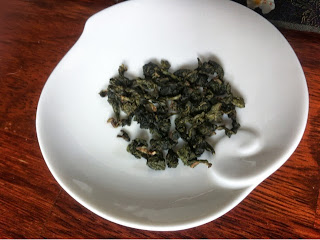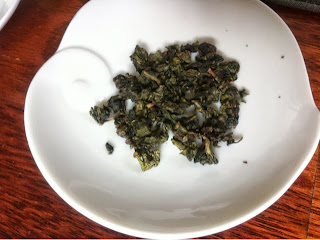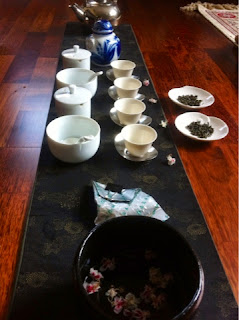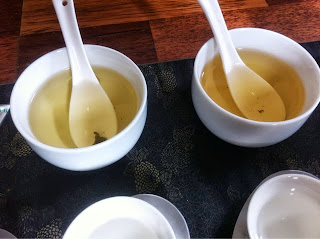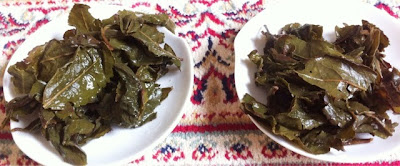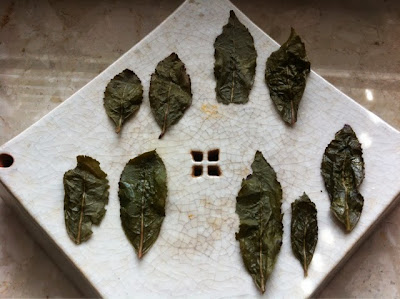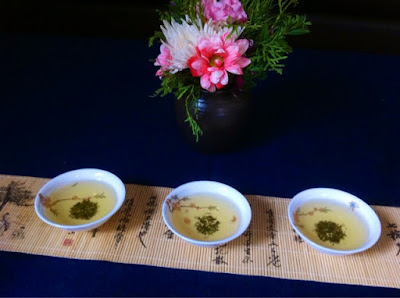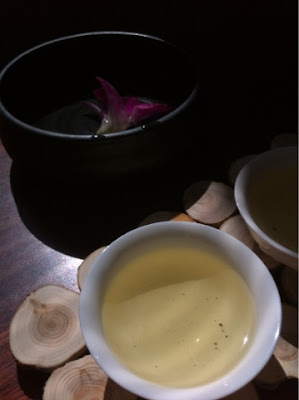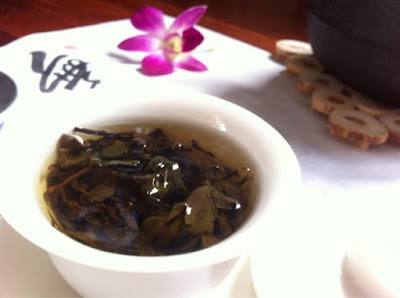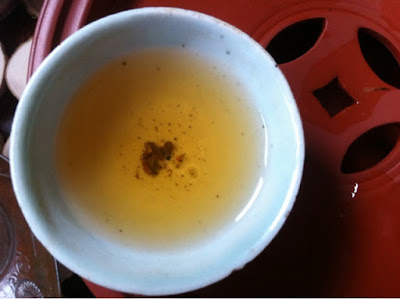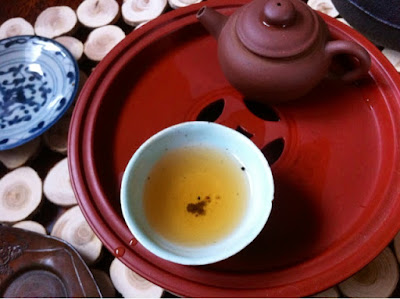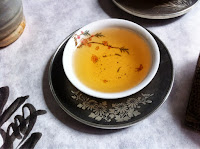
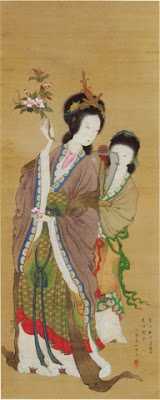 Just a rank below the empress, Yang Gui Fei, known for her unrivalled beauty and footprints she left behind in Chinese history is the woman shown in this painting. Since her pre-mature death, her beauty can only be inferred from old records and ancient paintings.
Just a rank below the empress, Yang Gui Fei, known for her unrivalled beauty and footprints she left behind in Chinese history is the woman shown in this painting. Since her pre-mature death, her beauty can only be inferred from old records and ancient paintings. Many of her namesakes began to emerge in Chinese society. Gui Fei chicken, a yummy dish remembered for its trademark liquorice flavour and Gui Fei Oolong tea, a new addition to my growing list of teas that I have sniffed, tasted, enjoyed and strongly recommend.
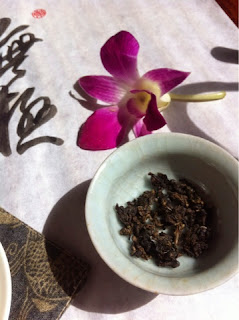 This slow roasted oolong tea is refreshingly light and flavoursome at the same time - tea and water fused seamlessly. In combination with its dewy sweetness and pure aftertaste, I would like to coin this the fruit juice of teas.
This slow roasted oolong tea is refreshingly light and flavoursome at the same time - tea and water fused seamlessly. In combination with its dewy sweetness and pure aftertaste, I would like to coin this the fruit juice of teas.  With 3 grams of this tea brewed in a Gaiwan, I can obtain at least 4 standard infusions in one session. Generally, I would allow for a 5th infusion, leaving the tea to steep for an extended period of time and returning to it after an hour or so. The result is a cooler, more concentrated version of this tea - the perfect thirst quencher.
With 3 grams of this tea brewed in a Gaiwan, I can obtain at least 4 standard infusions in one session. Generally, I would allow for a 5th infusion, leaving the tea to steep for an extended period of time and returning to it after an hour or so. The result is a cooler, more concentrated version of this tea - the perfect thirst quencher. 
